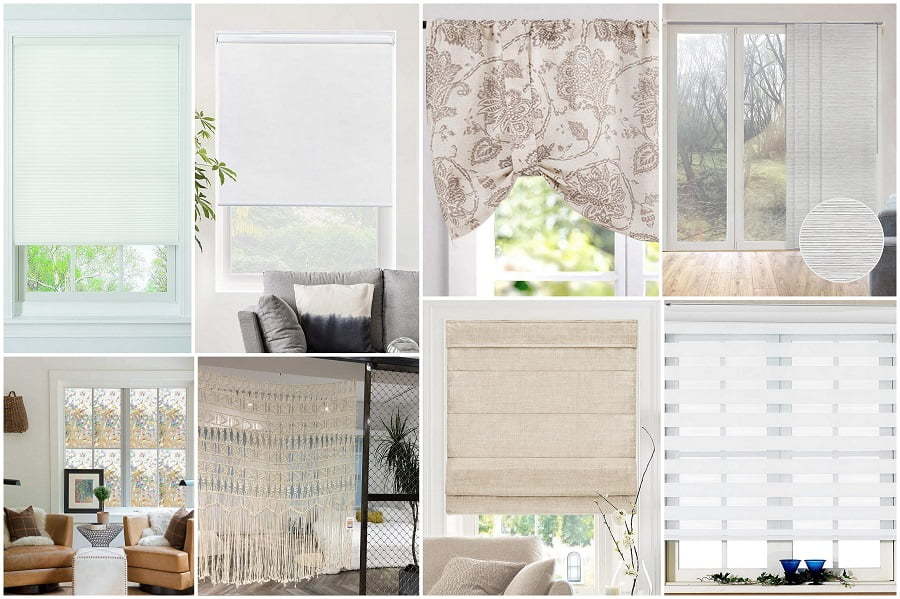Last updated on
Explore the world of concrete floor alternatives as we dive into various eco-friendly, stylish, and cost-effective options for your home or commercial space.
Welcome to my blog, where I share tips and tricks on how to create stunning decor on a budget. Today we’re going to talk about an often-overlooked aspect of home decor: flooring.
Specifically, concrete floors. While concrete floors can be a great option for some homes, they may not be the best fit for everyone’s style or budget.
That’s why I’ve put together this guide on alternative flooring options that will give you the same chic and modern look without breaking the bank. So whether you’re looking to update your living room, bedroom, or even your kitchen, keep reading for some creative and affordable ideas that will transform your space from drab to fab!
Epoxy Flooring
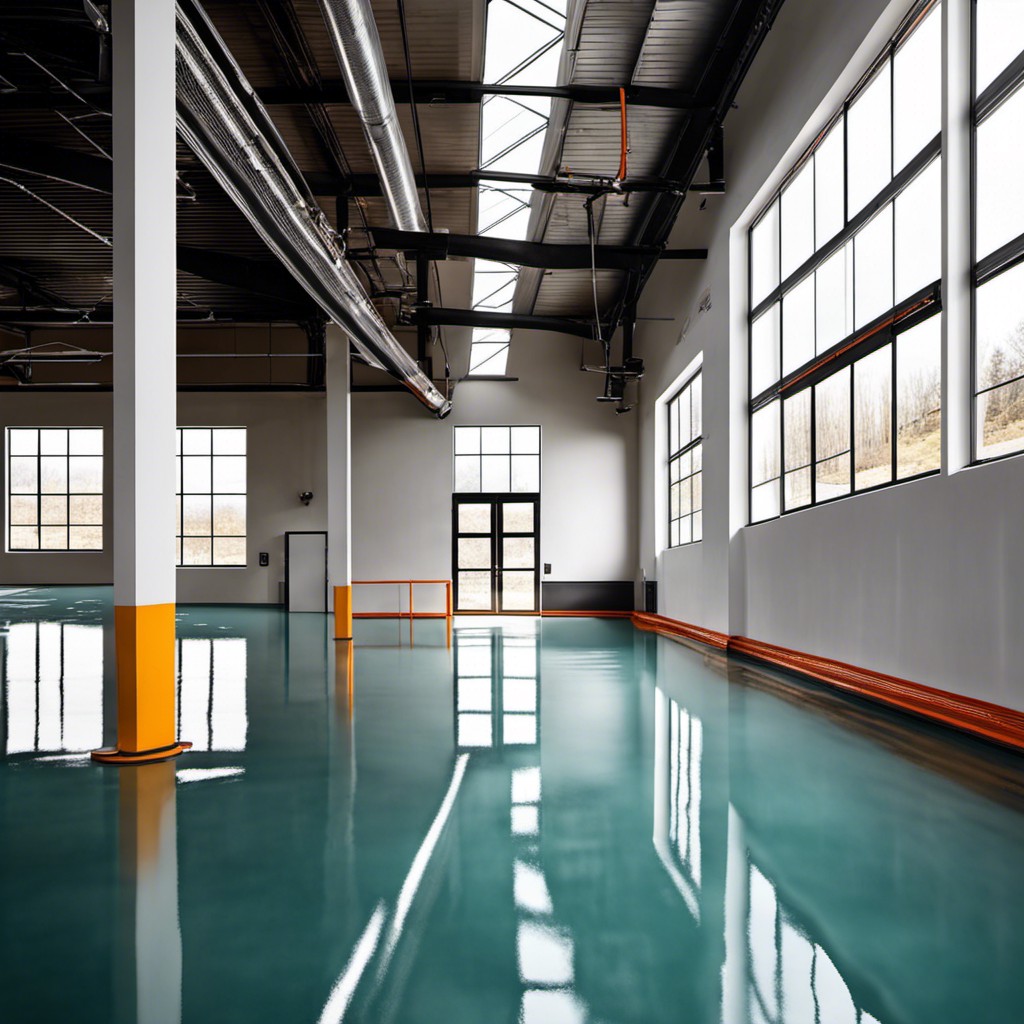
Epoxy flooring is a popular alternative to concrete floors that offers durability, versatility, and style. Epoxy is a type of resin that can be applied over existing concrete floors or other surfaces to create a smooth and glossy finish.
It’s perfect for high-traffic areas like garages, basements, and commercial spaces because it’s resistant to stains, chemicals, abrasions and easy-to-clean.
One of the best things about epoxy flooring is its ability to mimic other materials such as marble or granite at an affordable price point. You can choose from various colors and patterns depending on your preference.
Another advantage of epoxy flooring is its low maintenance requirements compared with traditional floorings like hardwoods which require regular polishing or waxing.
If you’re looking for an eco-friendly option then consider water-based epoxies which are free from volatile organic compounds (VOCs) making them safe for both humans & pets alike while also being environmentally friendly!.
Ceramic Tiles
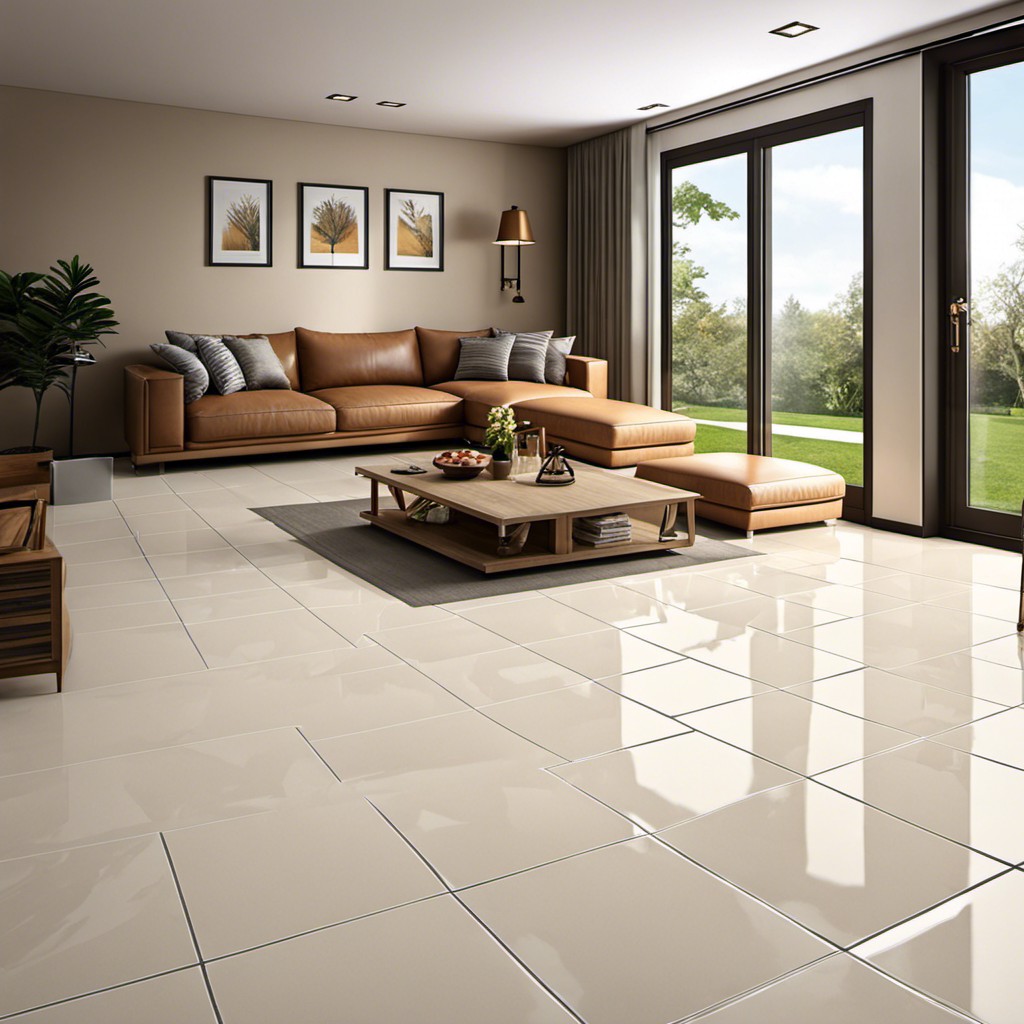
They come in a wide range of colors, patterns, and sizes that can fit any style or design preference. Ceramic tiles are also easy to clean and maintain which makes them perfect for high-traffic areas like kitchens or bathrooms.
One of the best things about ceramic tiles is that they can mimic other materials such as natural stone or hardwood floors without the hefty price tag. You can create an elegant look with marble-like ceramic tiles in your living room or go for a rustic feel with wood-look ceramic planks in your bedroom.
Another advantage of using ceramic tiles is their resistance to moisture which makes them ideal for humid environments like bathrooms where water damage could be an issue over time. With proper installation techniques and regular maintenance practices such as sealing grout lines every few years will ensure longevity.
Hardwood Floors
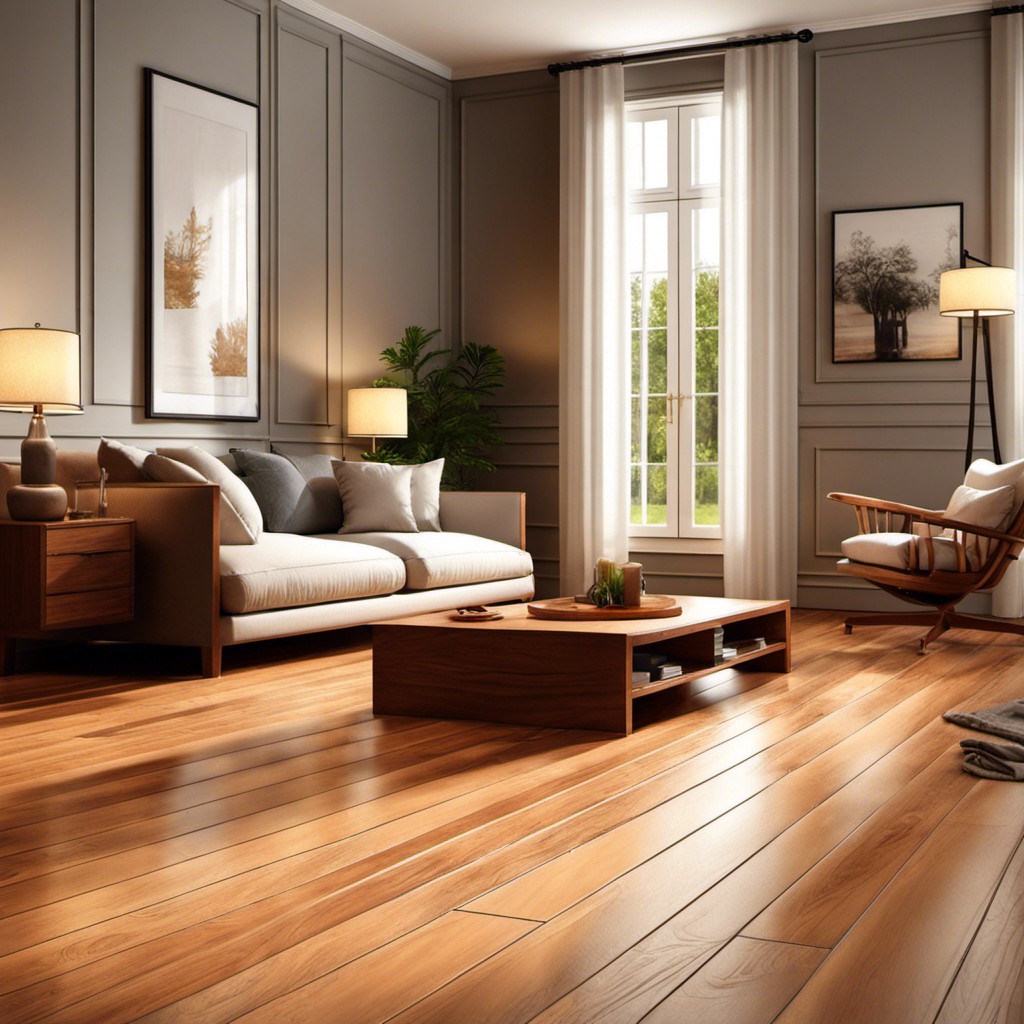
While they may seem expensive, there are ways to get the look for less. One option is engineered hardwood flooring, which is made from layers of wood veneer with a plywood or high-density fiberboard core.
This type of flooring looks just like solid hardwood but costs significantly less.
Another way to save money on hardwood floors is by using reclaimed wood. Reclaimed wood comes from old buildings or structures that have been torn down, giving it character and history while also being eco-friendly.
If you’re looking for an even more budget-friendly option, consider laminate flooring with a hardwood look-alike design printed onto its surface layer. Laminate has come a long way in recent years in terms of quality and durability so don’t be afraid to give it another chance!
Cork Flooring
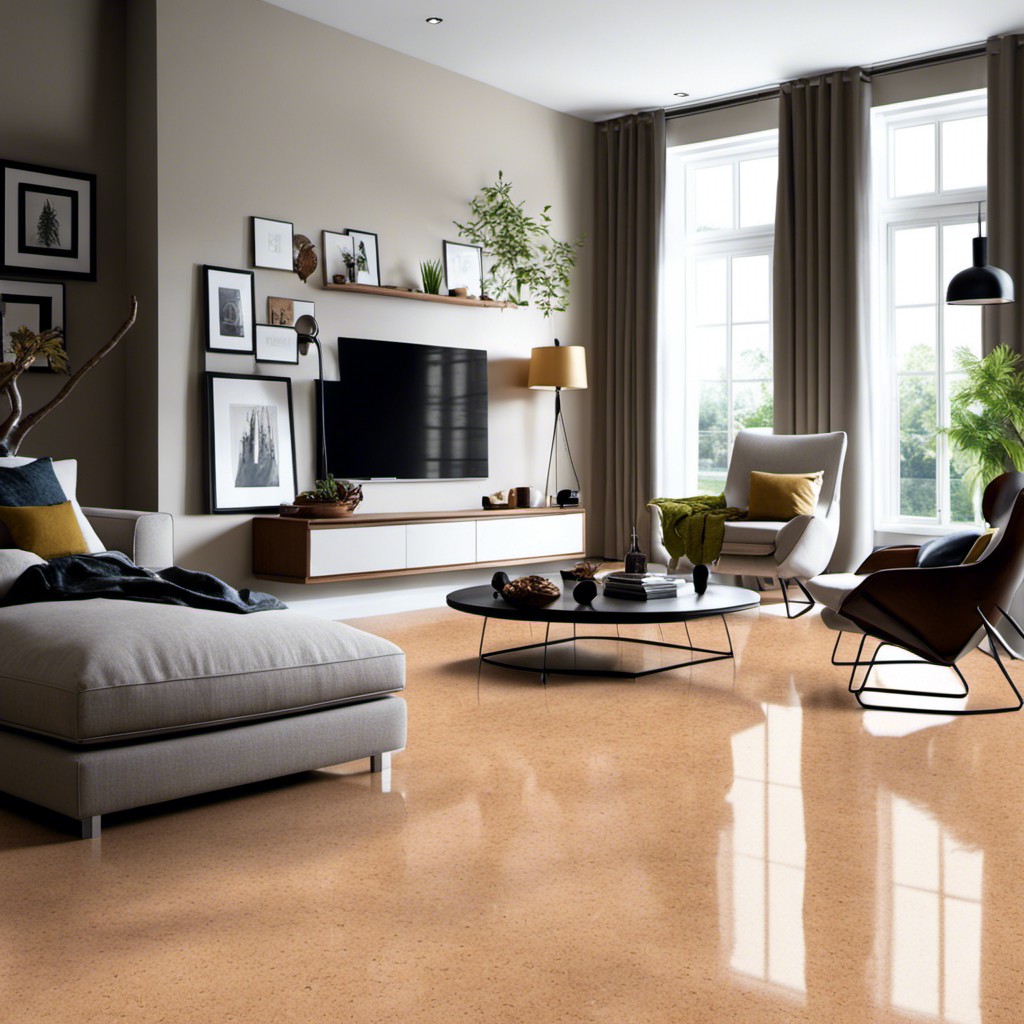
Cork is made from the bark of cork oak trees, which means that it’s a renewable resource that can be harvested without harming the tree. It’s also naturally resistant to mold and mildew, making it an ideal choice for areas with high humidity levels.
One of the best things about cork flooring is its versatility in terms of style. You can find cork tiles or planks in a variety of colors and patterns, so you’re sure to find something that fits your aesthetic preferences.
Plus, because it has natural sound-absorbing properties, cork flooring can help reduce noise levels in your home.
Another benefit of choosing cork over concrete floors is its softness underfoot. Cork has some give when you walk on it due to its cellular structure which makes standing on this type floor more comfortable than other hard surfaces like tile or hardwoods.
Laminate Flooring

It’s made of synthetic materials that mimic the look and feel of real wood, but at a fraction of the cost. Laminate flooring comes in various colors and styles, so you can find one that matches your decor perfectly.
One advantage of laminate flooring is its durability. It’s resistant to scratches and dents, making it ideal for high-traffic areas like living rooms or hallways.
It’s easy to clean with just a damp mop or cloth.
Another benefit is its ease of installation; most laminate floors come in interlocking planks that snap together without any glue or nails required. This makes it an excellent choice for DIY enthusiasts who want to save money on installation costs.
Rubber Flooring

Made from recycled tires, this type of flooring is not only sustainable but also incredibly resilient. It’s ideal for high-traffic areas like gyms or playrooms because it can withstand heavy foot traffic and resist scratches and dents.
One of the best things about rubber floors is that they come in a variety of colors, patterns, and textures to suit any style preference. You can choose from solid colors or mix-and-match tiles to create unique designs that will make your space stand out.
Another advantage of rubber floors is their easy maintenance – just sweep or mop them regularly to keep them clean. They are also slip-resistant which makes them an excellent choice if safety concerns are paramount.
Stained Concrete
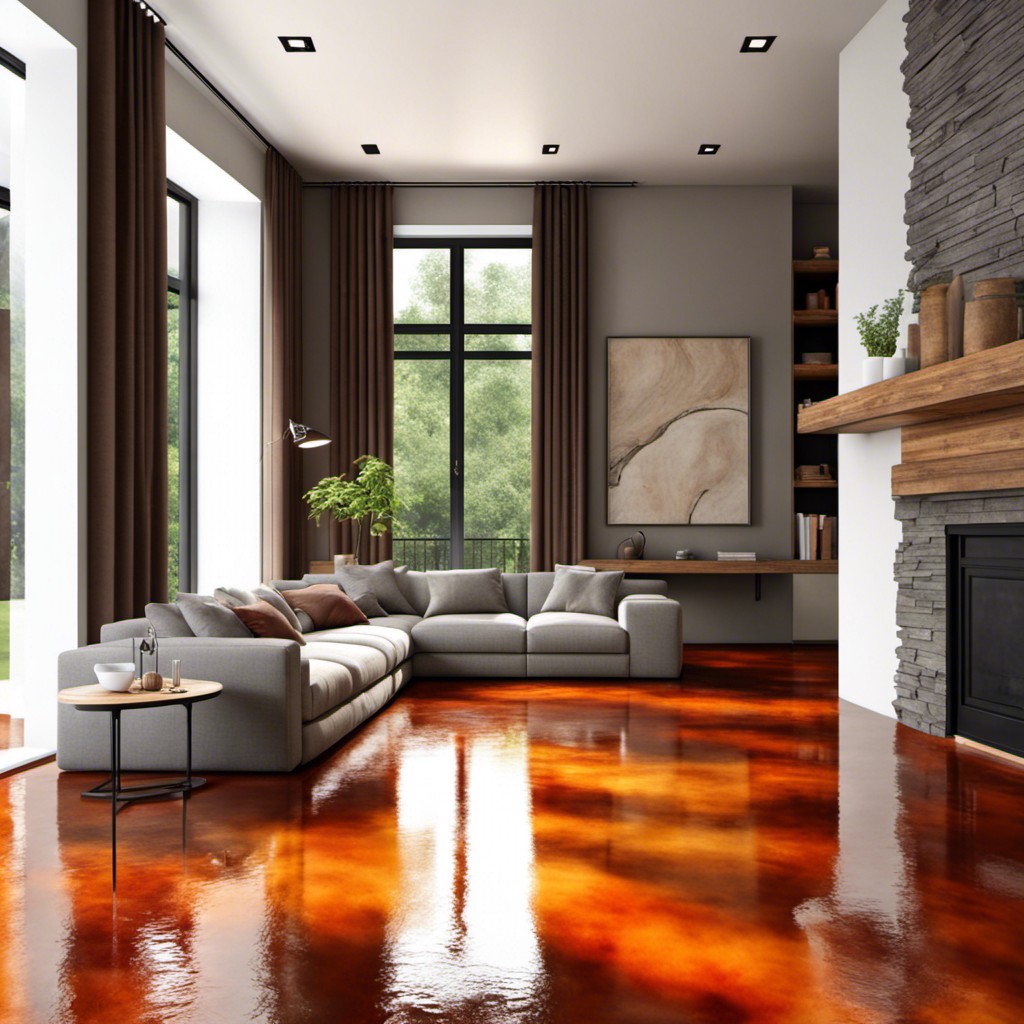
Staining concrete involves applying a chemical solution to the surface of the floor that reacts with minerals in the concrete to create a permanent color change. The result is an eye-catching marbled effect that can mimic natural stone or even wood grain.
One of the biggest advantages of stained concrete is its durability and low maintenance requirements. Unlike other flooring options, it doesn’t require regular waxing or polishing to maintain its shine.
It’s also resistant to scratches, stains, and fading from UV rays.
Another benefit is its versatility in terms of design options – there are endless possibilities when it comes to colors and patterns! You can choose from earthy tones like browns and greens for a more natural look or go bold with bright blues or reds.
Vinyl Flooring
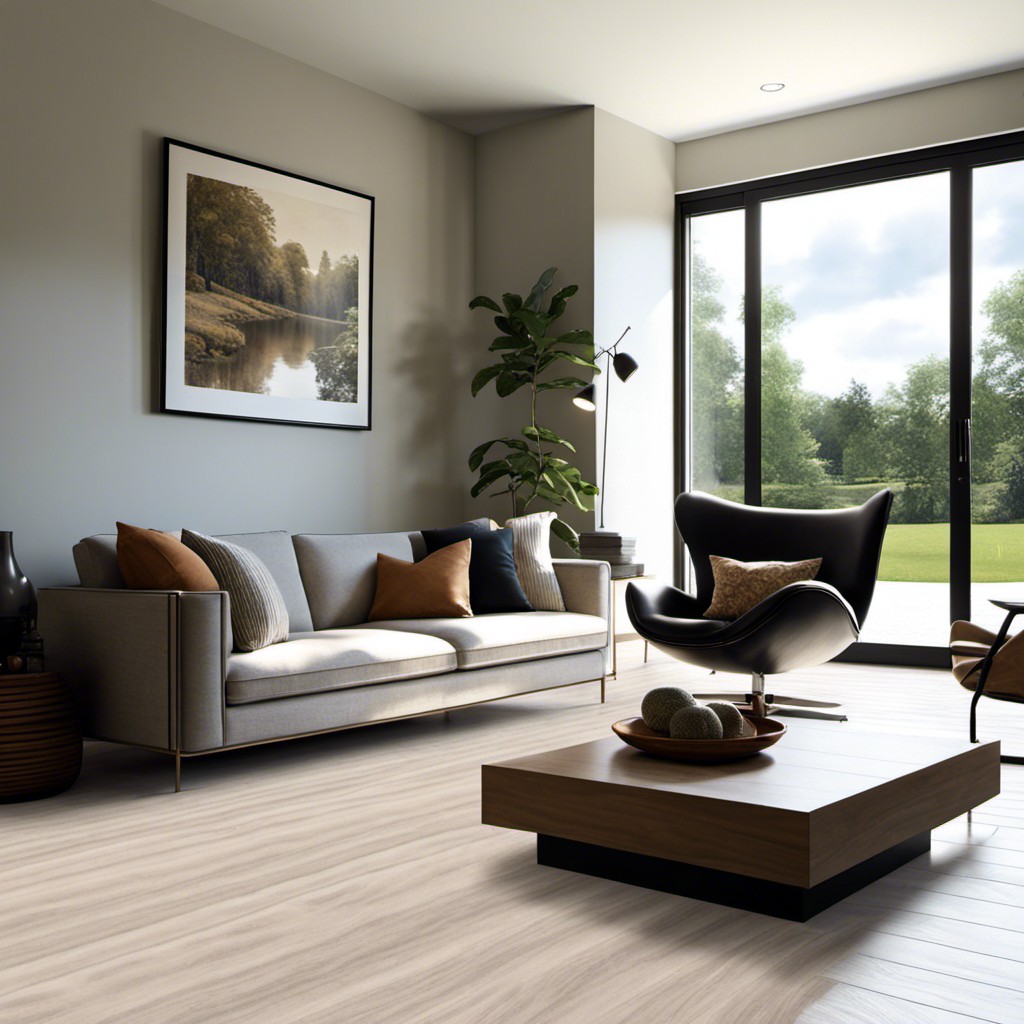
Vinyl floors are made of synthetic materials that mimic the look of natural materials like wood or stone. They come in a variety of colors and patterns, making it easy to find one that matches your decor style.
One great thing about vinyl floors is their durability. They can withstand heavy foot traffic without showing signs of wear and tear, making them ideal for high-traffic areas like entryways or kitchens.
Another benefit is their low maintenance requirements – they’re easy to clean with just soap and water! Plus, they don’t require any special treatments or refinishing over time.
Vinyl floors also offer excellent moisture resistance which makes them suitable for bathrooms as well as basements where dampness may be an issue.
Bamboo Flooring
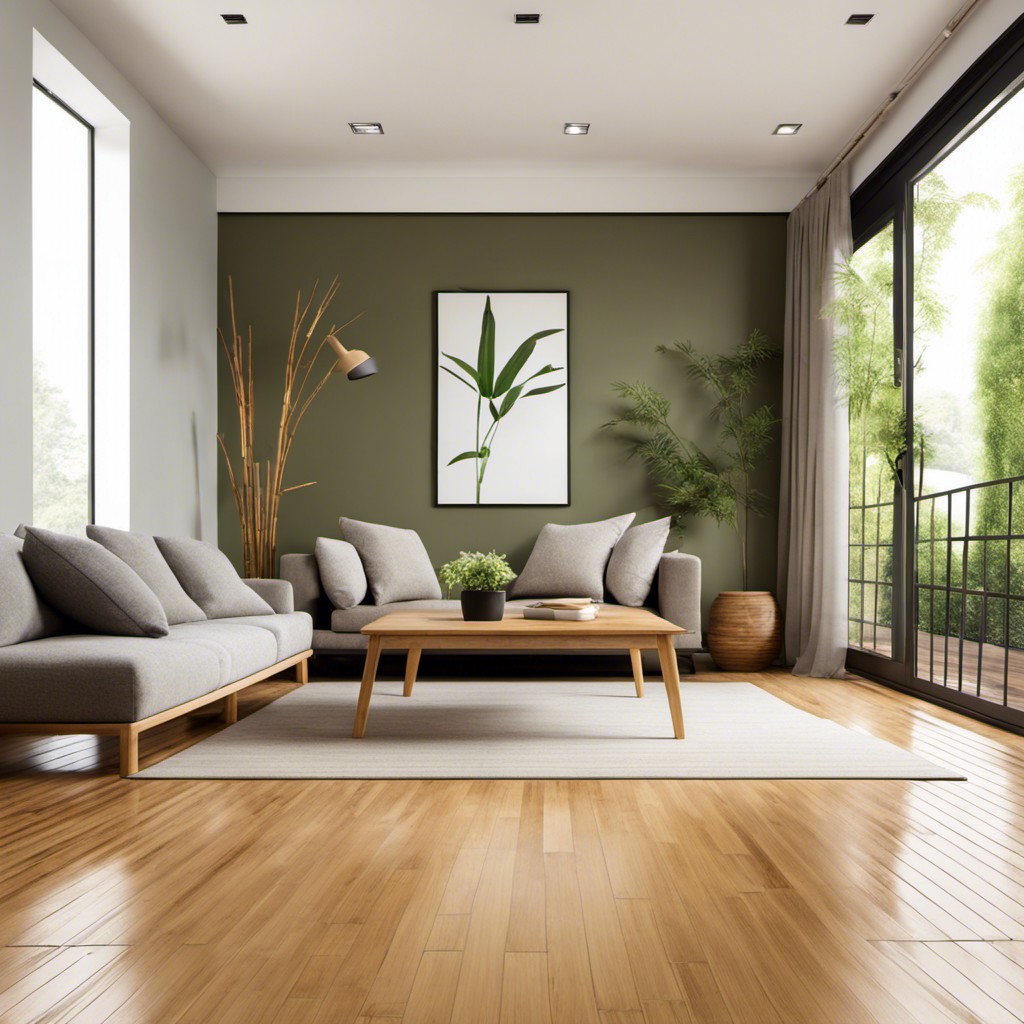
Bamboo is a fast-growing grass that can be harvested every five to six years without harming the plant or surrounding environment. It’s also incredibly durable and resistant to moisture, making it ideal for high-traffic areas like living rooms and kitchens.
Bamboo flooring comes in a variety of styles, from natural light tones to darker shades that mimic hardwood floors. It’s easy to install with interlocking planks or glue-down options available depending on your preference.
One thing to keep in mind when considering bamboo flooring is its susceptibility to scratches and dents compared with other materials like hardwoods or tiles. However, this can be mitigated by choosing higher quality brands that use harder types of bamboo such as strand-woven varieties.
Terrazzo Floors

Terrazzo is a composite material made up of chips of marble, quartz, granite or glass set in concrete or epoxy resin. It has been used for centuries in Italy and other parts of Europe as an affordable alternative to marble flooring.
Today, terrazzo floors are making a comeback due to their unique look and eco-friendliness. They come in various colors and patterns that can be customized to fit any design style from modern minimalist to bohemian chic.
One advantage of using terrazzo is its durability; it can last for decades with proper maintenance. It’s easy to clean since the surface is non-porous which makes it resistant against stains caused by spills or pet accidents.
Overall if you want something different than traditional hardwoods but still want your home decor on point then consider installing beautiful Terrazo floors!
Linoleum Flooring
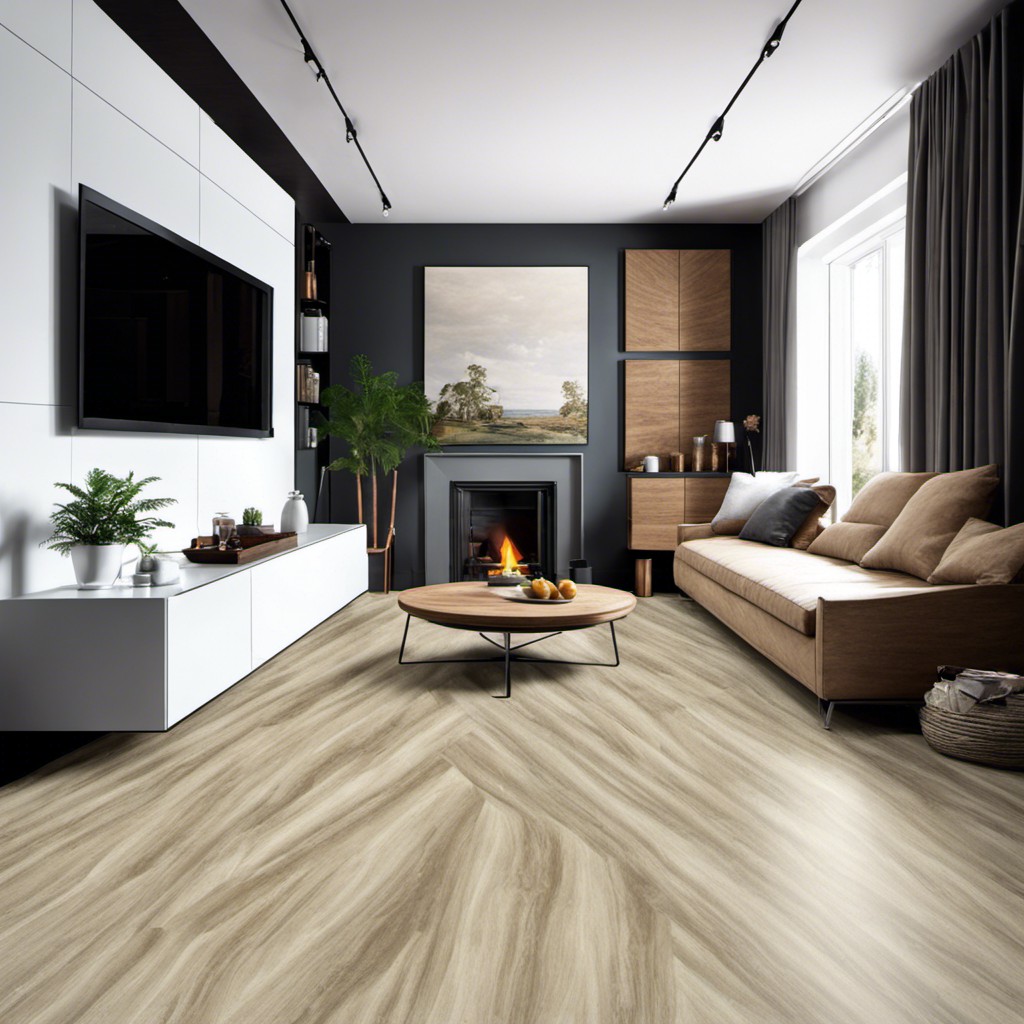
Made from natural materials such as linseed oil, cork dust, and wood flour, linoleum is durable and easy to maintain. It comes in a variety of colors and patterns that can mimic the look of concrete or add some personality to your space.
One advantage of linoleum over other types of flooring is its ability to resist stains, scratches, and water damage. This makes it ideal for high-traffic areas like kitchens or bathrooms where spills are common.
Another benefit of choosing linoleum over concrete floors is its affordability. Linoleum typically costs less than hardwood or ceramic tiles but still provides the same level of durability.
Carpet Tiles
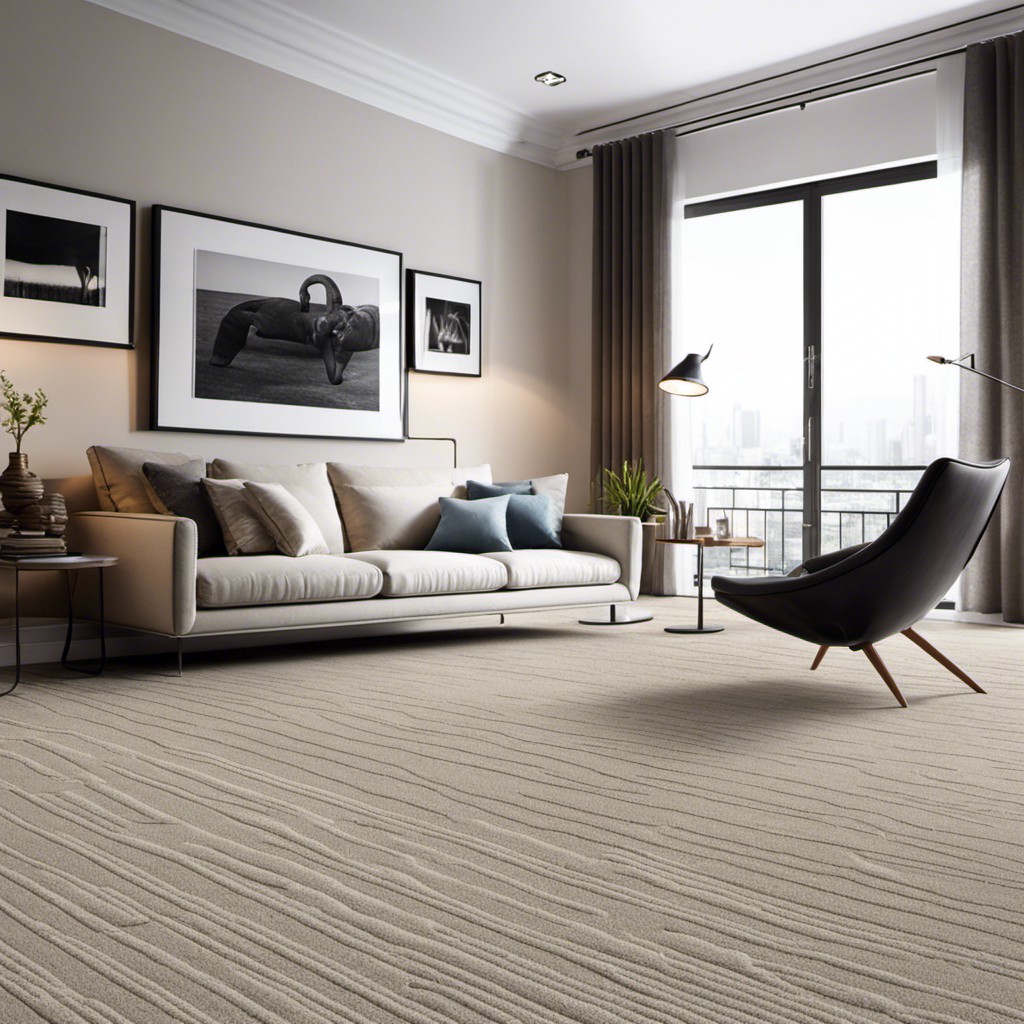
These modular squares of carpet are easy to install and can be arranged in endless patterns and designs. They come in a variety of colors, textures, and materials such as wool or nylon.
One great advantage of using carpet tiles is that they are very durable. If one tile gets damaged or stained beyond repair, it’s easy to replace just that one tile instead of having to replace the entire floor.
Another benefit is their versatility; they work well in any room from bedrooms to living rooms or even offices. Plus, with so many options available on the market today – including eco-friendly choices made from recycled materials – there’s sure to be something that fits your style preferences while also being budget-friendly.
Engineered Wood

Engineered wood is made up of layers of real wood veneer glued together with a plywood base. This construction makes it more stable than solid hardwood and less prone to warping or shrinking due to changes in temperature or humidity.
One great thing about engineered wood is that it comes in many different styles and finishes, so you can find one that matches your decor perfectly. Whether you prefer light oak or dark walnut, there’s an option out there for everyone.
Another advantage of engineered wood over traditional hardwood floors is its ease of installation. It can be installed as a floating floor over any flat surface without the need for nails or glue, making it an excellent DIY project.
If you want the look and feel of real hardwood floors without breaking the bank on materials and installation costs – consider giving engineered woods some serious thought!
Natural Stone Tiles
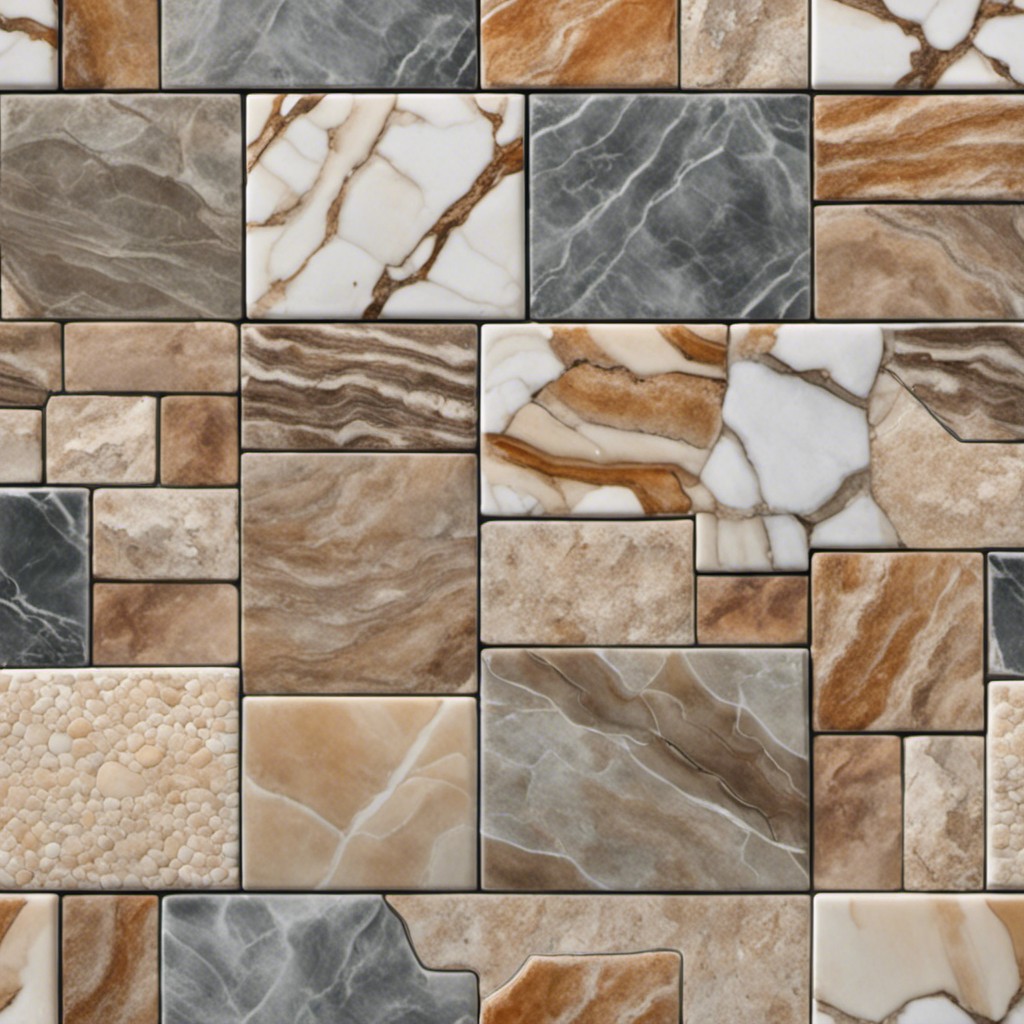
These tiles come in a variety of materials such as granite, marble, limestone, slate or travertine. They can be used in any room of the house and add an elegant touch to your decor.
One advantage of natural stone tiles is their durability; they can last for decades with proper care. They are also easy to clean and maintain which makes them ideal for high traffic areas like kitchens or entryways.
Another benefit is their versatility; natural stone comes in many different colors and patterns so you can choose one that complements your existing decor perfectly. Whether you prefer earthy tones or bold hues, there’s sure to be a natural stone tile option that suits your style.
While they may not be the cheapest flooring option out there, investing in quality natural stones will pay off over time due to its longevity compared with other types of flooring options available on the market today.
Polished Concrete
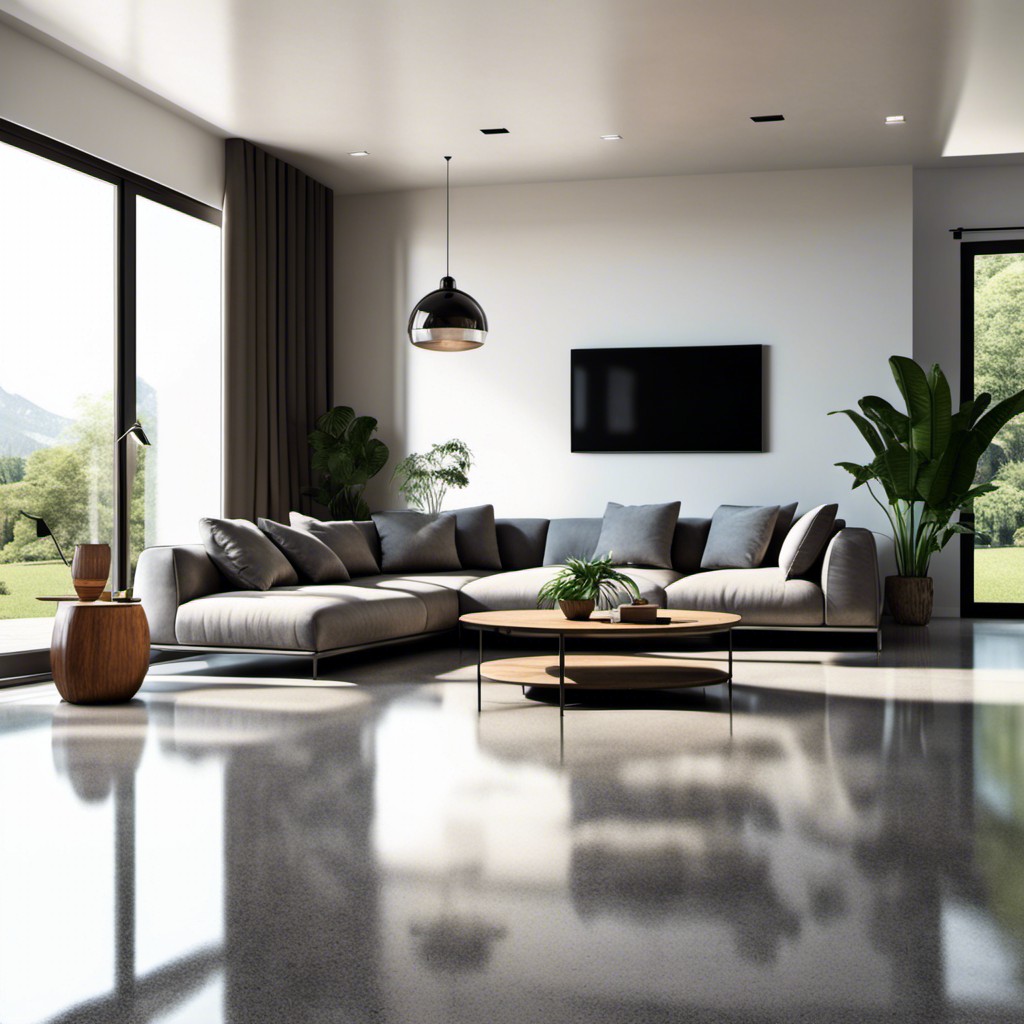
This type of flooring is created by grinding down the surface of a concrete slab until it’s smooth and shiny. The result is a durable, low-maintenance floor that can last for decades with proper care.
One of the benefits of polished concrete is its versatility. It can be customized to fit any style or color scheme by adding dyes or stains during the polishing process.
Plus, it’s an eco-friendly choice since it doesn’t require additional materials like carpeting or hardwood floors. However, keep in mind that while polished concrete may seem like an affordable option at first glance, installation costs can add up quickly if you have to remove existing flooring before installing it.
This type of flooring may not be suitable for homes with young children who are prone to falls as they tend to become slippery when wet. Overall though if you want something unique and stylish without breaking your budget then consider giving polished concrete some serious thought!
Porcelain Tiles
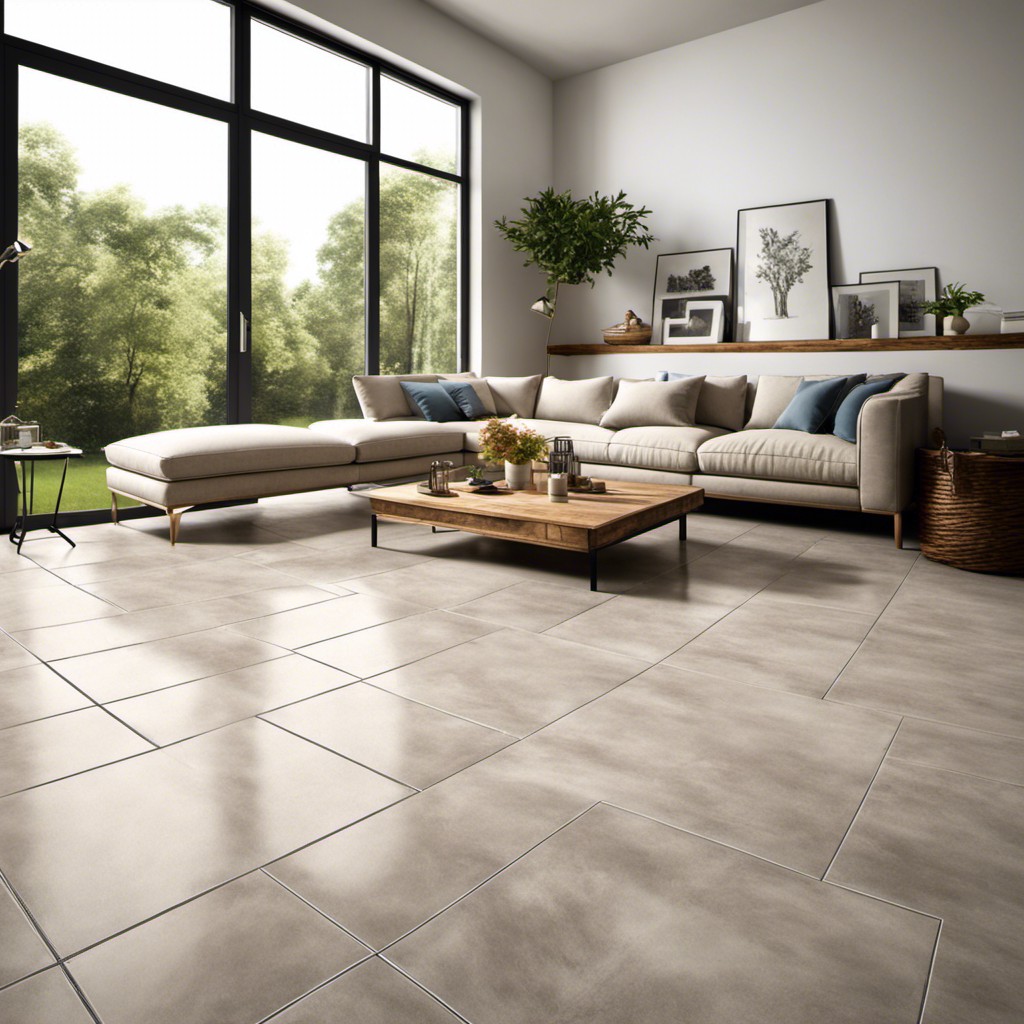
These tiles are made from high-quality clay that is fired at extremely high temperatures, making them resistant to scratches, stains, and moisture. Porcelain tiles come in a variety of colors and patterns that can mimic the look of natural stone or wood without the hefty price tag.
One of the biggest advantages of porcelain tile is its versatility. It can be used in any room in your home or commercial space – from bathrooms to kitchens to living rooms – without worrying about water damage or wear-and-tear over time.
Another benefit is their ease-of-cleaning; simply sweep up debris with a broom then mop with warm soapy water as needed.
Microcement Flooring

It’s a type of cement-based coating that can be applied to almost any surface, including floors, walls, and even furniture. Microcement is known for its durability and versatility as it can be customized to fit any style or color scheme.
One of the biggest advantages of microcement flooring is its seamless finish. Unlike traditional tiles or hardwood floors with visible grout lines or seams between planks, microcement creates an uninterrupted surface that gives your space a sleek and modern look.
Another benefit of microcement flooring is its low maintenance requirements. Once sealed properly after installation, it becomes resistant to water damage and stains making cleaning up spills easy without worrying about damaging your floor.
If you’re looking for an eco-friendly option for your home renovation project then consider using micro-cements as they are made from natural materials like cement powder mixed with polymers which makes them environmentally friendly compared to other synthetic options available in the market today.
Penetrating Sealers
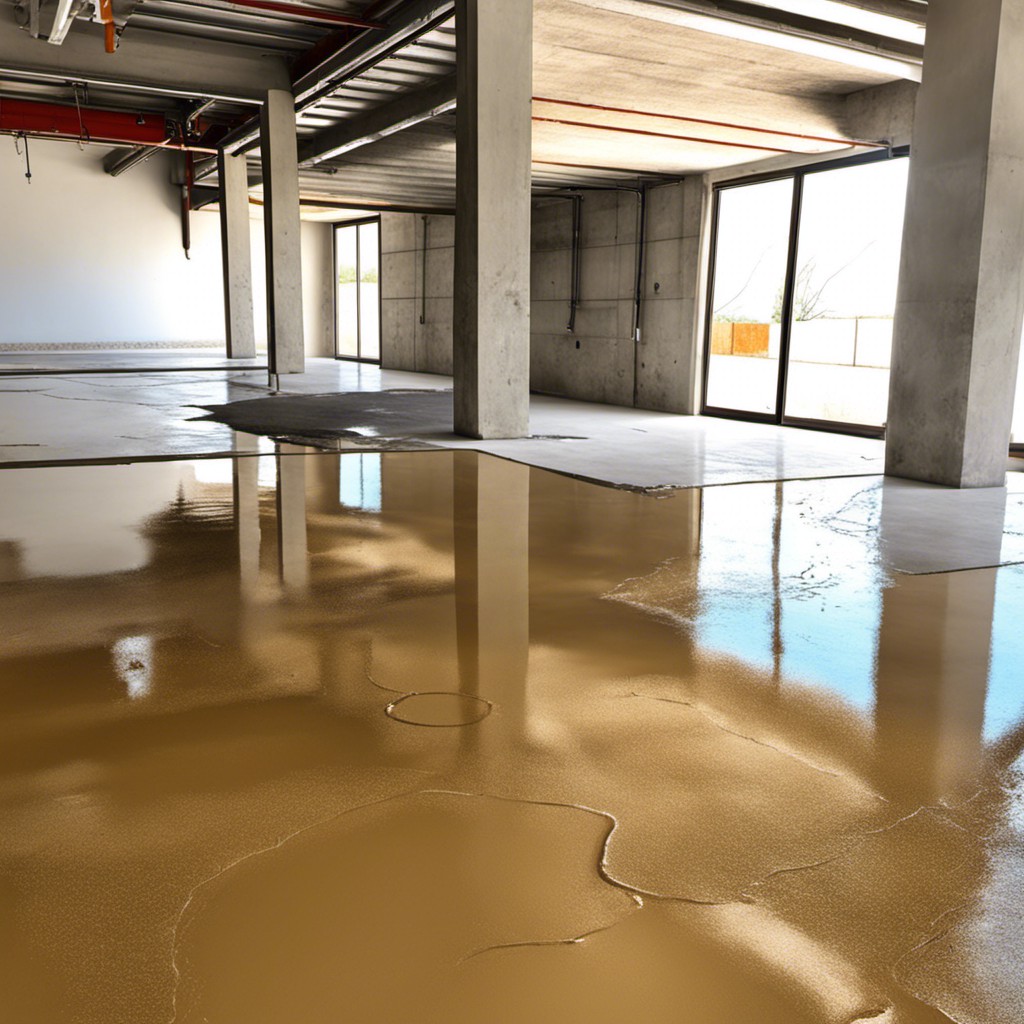
These sealers penetrate deep into the pores of the concrete, creating a barrier that repels water, oil, and other liquids. Unlike topical sealers that sit on top of the surface and can wear off over time, penetrating sealers provide long-lasting protection without altering the appearance or texture of your floors.
One popular type of penetrating sealer is silane/siloxane-based sealer. This type of sealer is made up of small molecules that can easily penetrate into even microscopic cracks in your concrete floor.
Once applied, it creates an invisible barrier against moisture and stains while still allowing your floor to breathe.
Another benefit to using a penetrating sealer is its eco-friendliness compared to traditional coatings like epoxy or polyurethane finishes which contain volatile organic compounds (VOCs). Penetrating seals do not emit harmful chemicals during application or use making them safe for both you as well as pets.
Green Concrete Flooring Options
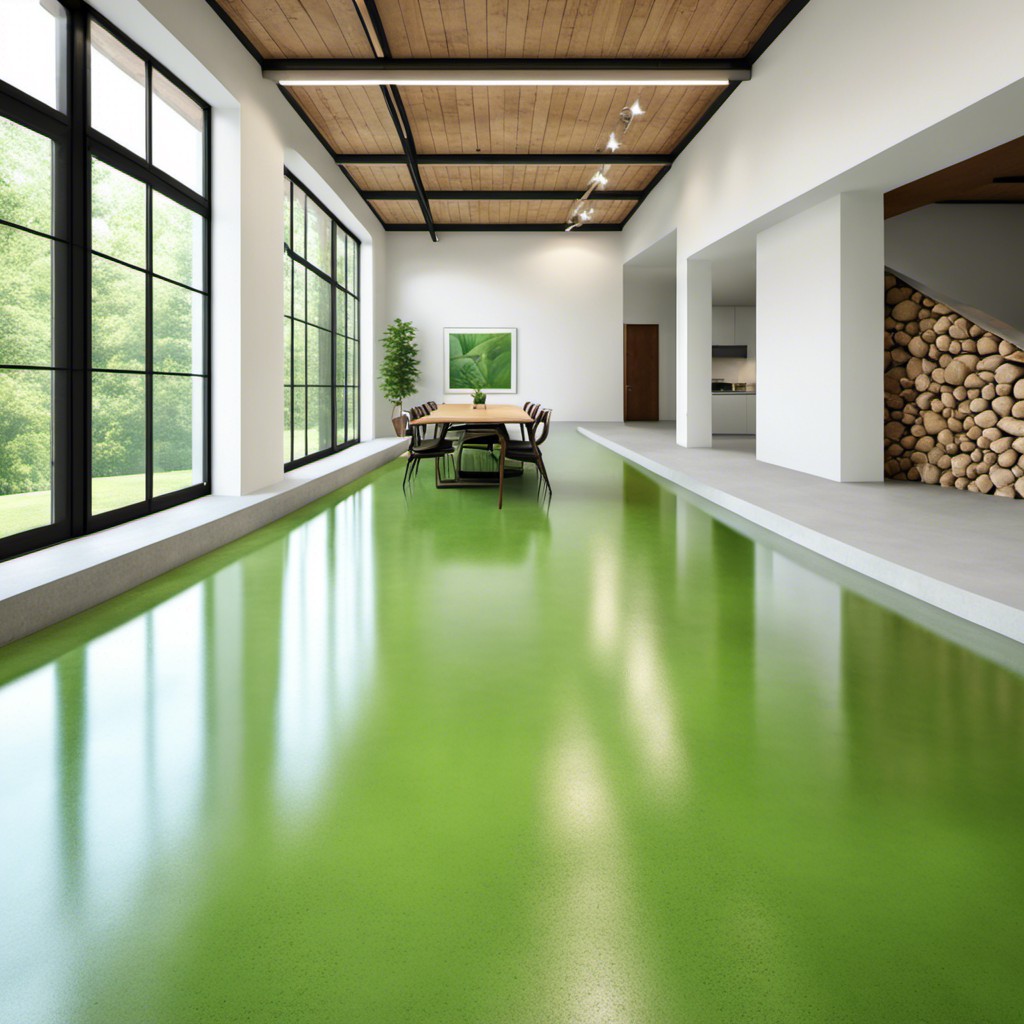
One of the most popular is polished concrete, which involves grinding down the surface of the concrete to create a smooth and shiny finish. This process eliminates the need for additional materials like carpet or tile and reduces waste.
Another option is using penetrating sealers that allow moisture to escape from your floors while still protecting them from stains and damage. These sealers can be made with natural ingredients like soybeans or linseed oil instead of harsh chemicals.
You could also consider using recycled glass aggregate in your concrete mix, which not only adds an interesting visual element but also helps reduce waste by repurposing discarded materials.
Concrete Debris
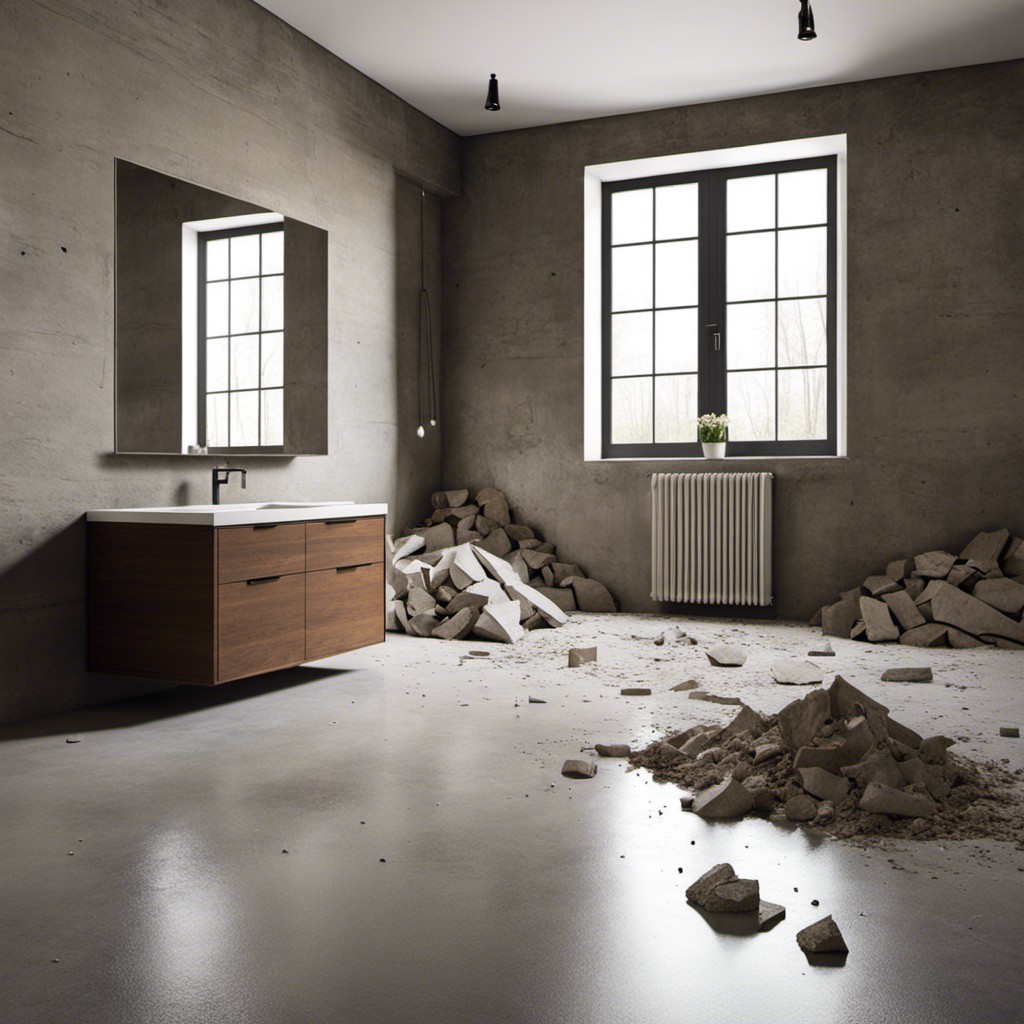
It can be challenging to dispose of, and it’s not always environmentally friendly. However, there are ways to repurpose this waste material and turn it into something useful for your home decor.
One option is to use the concrete debris as a base layer for new flooring installations. This method involves breaking up the old concrete floor into small pieces and using them as a foundation layer before installing new flooring on top.
Another creative way to reuse concrete debris is by turning it into decorative elements such as planters or garden sculptures. With some creativity, you can transform these discarded materials into unique pieces that add character and charm to your outdoor space.
While dealing with concrete debris may seem like an inconvenience at first glance, there are many ways in which you can repurpose this waste material creatively. By doing so, not only will you save money on disposal costs but also contribute towards sustainable living practices by reducing landfill waste!
FAQ
Is there a cheaper alternative to concrete for slab?
Yes, a cheaper alternative to concrete for a slab is steel, as it is cost-effective, sustainable, and easier to use in construction.
What is cheaper than concrete?
Gravel is cheaper than concrete.
What is the cheapest way to do concrete floors?
The cheapest way to do concrete floors is by using epoxy kits, which provide a simple and low-cost solution for finishing concrete garage or basement floors.
Is there an environmentally friendly alternative to concrete?
Yes, environmentally friendly alternatives to concrete include Bamboo, Rammed Earth, Timbercrete, Clay, Strawbale, Grasscrete, Cork, and Wool.
What are some sustainable materials to consider as alternatives to concrete flooring?
Some sustainable alternatives to concrete flooring include bamboo, cork, reclaimed wood and linoleum.
How do the durability and maintenance requirements of concrete floor alternatives compare?
Compared to concrete floors, alternatives typically offer varied durability and maintenance requirements, with some materials being more durable and others requiring more frequent maintenance.
Are there any innovative technologies for creating cost-effective and eco-friendly floorings as alternatives to concrete?
Yes, there are innovative technologies, such as using cork, bamboo, and recycled materials, which serve as cost-effective and eco-friendly alternatives to concrete flooring.
Recap




